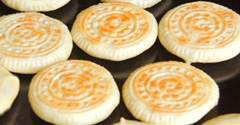About
A Brief History of Shanxi Merchants
( chinadaily.com.cn)The rise of Shanxi merchants could be dated back to the "Kai Zhong Policy" in Ming Dynasty, in which government officials commissioned merchants to transport food supplies. Besides, Shanxi had rich mineral resources, while the handicraft and manufacturing industries also achieved considerable scale, which provided a substantial base for the merchants' development.
At the same time, due to the dense population in southern Shanxi, merchants had to travel to other parts of China to gain their living. As a result, Shanxi merchants could be found all over China. Once there was a saying in Beijing that "Most of the rich merchants in Beijing come from Shanxi."
The business competition became ever more furious over time. So to strengthen their own power, Shanxi merchants began to organize into merchants group. At first, it was the rich merchants who employed local business people. Later, it developed into "Dong Huo Zhi," which was similar to the current joint stock system. This pioneering work of Shanxi merchants was the reason why their organization could last for a long time.
Although Shanxi merchants emerged as a regional group in the Ming Dynasty, yet it was in the Qing Dynasty that they enjoyed their full bloom, with the set up of the guildhall as a symbol. The guildhall was designed for the communication and connection of Shanxi people at the beginning; later it became an organization of self-protection for the merchants.
The Strongest Merchants Group: the Qing Dynasty
Shanxi merchants became one of the, if not the most, successful and powerful merchants groups in China. They were viewed as equals to Italian merchants in world economic history. The development of business not only brought people wealth, but also changed the traditional belief of "He who excels in study can follow in the career of an official."
The saying went that, "It's better to have a connection in a teahouse than to have a large amount of money" and "To be a government official is not as good as to work in a teahouse or bank." Teahouses and banks were both hot industries at that time.
In the Qing Dynasty, Shanxi merchants were listed at the top of merchants groups in China, with a good reputation in Asia and even Europe. They excelled especially in three industries: camel teams, ship teams, and draft banks.
Camel Team
Camel teams, one of the important Shanxi merchants groups, specialized in transportation by camel, and tea was their main product. The merchant's specialty was that they were in charge of every aspect from buying, processing, and transporting fresh tea, to selling the tea in different destinations.
Shanxi merchants purchased several tea mountains along Fujian, Hunan, Hubei, Zheijiang, and Jiangsu provinces, acquired fresh tea, and processed into brick tea, and then by road or river delivered the products to their franchise stores. Their tea mainly went to Mongolia and Russia. The transport of tea was quite a dangerous job at that time.
Ship Team
Ship teams emerged in the middle of the Qing Dynasty. With the development of business and commerce, there was an increasing demand for copper, which was used for minting. Shanxi merchants then began to organize ship teams to import cooper from Japan. Jie's and Fan's were all famous "merchants of foreign copper."
Even though camel and ship teams enjoyed a good reputation, the greatest applause went to another industry: Shanxi draft banks.



